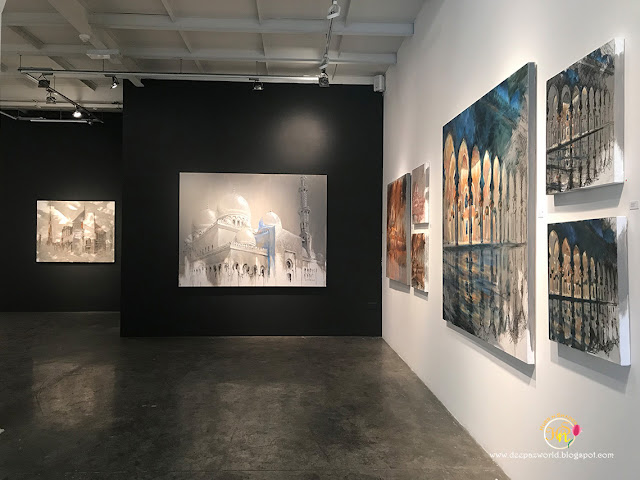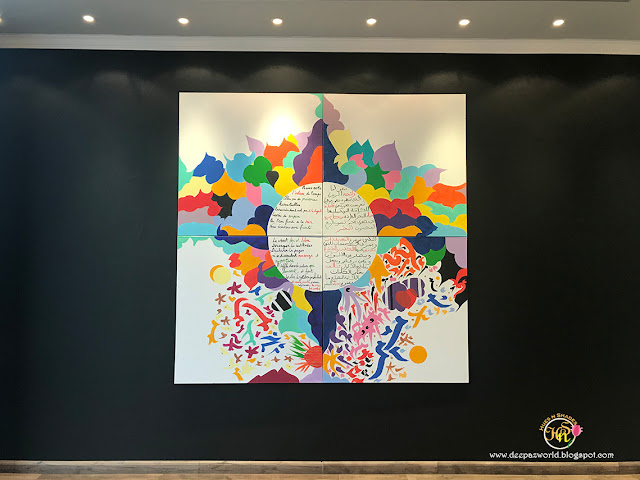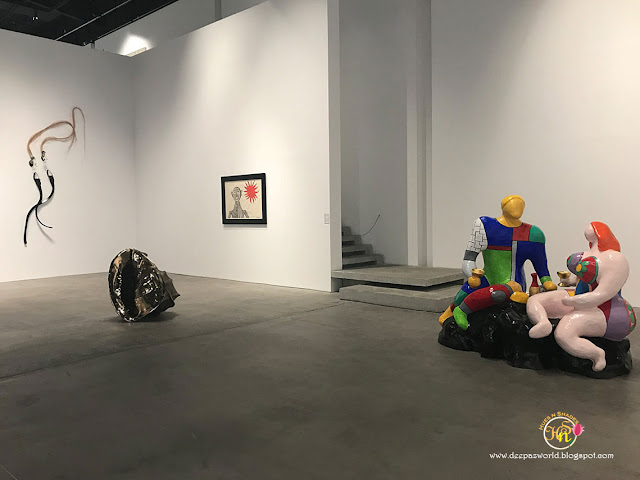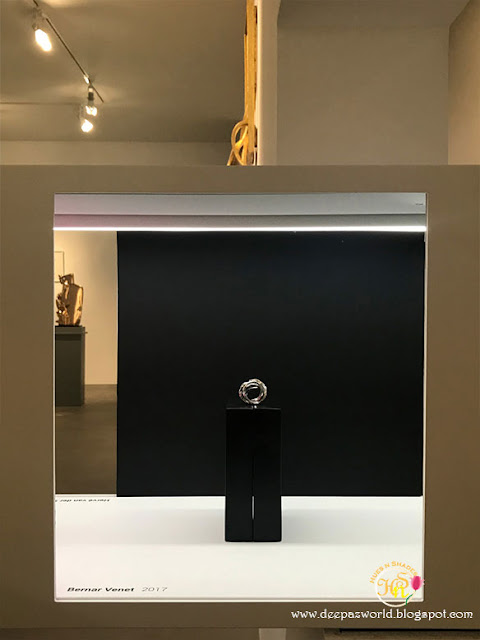Alserkal Avenue, named after its founder is the brainchild of Abdelmonem Bin Eisa Alserkal, was established in 2007 is situated in the industrial neighborhood of Al Quoz spreads across a space of 500,000 square feet which houses not only numerous galleries of international repute but also project spaces, residencies, non-profit artists' studios, concept stores, event facilities and even cafes' and food outlets. It was expanded in 2015 to give it the look of today. Situated in Dubai's industrial quarters, this Avenue is a cluster of architect-designed warehouses that aims to foster the creative spirit by bringing together collaborators from diverse artistic disciplines, encouraging open dialogue, sharing of ideas and collaborations to bring those ideas to life.
An architect turned artist, Mike Arnold, has used his old school skill of architectural drawings into a finer passion to create freer, looser and impressionistic works of the ever-changing urban cityscapes of UAE by playing with light and reflection. It most certainly reminded me of the Impressionists and their unending love of the transformative power of light and ‘the moment’. I was fascinated by his works which these photos haven’t done justice to.
“There is no overriding theme to his work other than a life-long passion dedicated to light. His attempt to chase and capture light is what marries all his work and within that search, Arnold attempts to convey emotion to his viewers.”
A grey eeriness definitely wafted in the air as I strolled through the unpolished floor of Carbon12. Umbra, ‘Shadows’ for Latin, immediately seized my whole attention. I could feel a sense of tension, abandonment, eeriness and desolation. In the vicinity of the scenes depicted. I could sense Hopper-like feel somewhere there. What made more interesting was the way the paintings were made. I have always been a lover of glass paintings and I have used this technique in my very old works. To have made use of the reverse glass painting on plexiglass this Portugese painter, Gil Heitor Cortesão, has made an awesome rendition. It makes a ghostly atmosphere where feelings are let loose and forlorn just as the things that inhabit the assigned space.
“Before: a ghostly shadow-world, where absence dwells in cavernous or cell-like spaces, rhythmed by the background hum of continual vertical lines. Behind: the viewing space, bounded by the gallery walls and floor. Or is it?”
(from the concept note)
If photography is a “message without a code” in the words of Roland Barthes, How does one read a photobook? Asks the concept while welcoming the viewers. The Photobook Show at the Gulf Photo Plus was the only we saw that was entirely dedicated to photography. They have works from the Middle East, North Africa, and Asia, showcasing a unique sampling of more than 40 photobooks from 13 different countries. In Martin Parr’s seminal work on the topic, The Photobook: A History Vol I, II, and III, he argues that in the form of a photobook, photography enables a kind of interpretation that is otherwise not possible from a single contextless image. While a gallery or museum wall offers a public display of photography, a photobook facilitates a private and even intimate reading of a photographer’s work and indeed, their world, even if the message may be elusive at times.
The most striking was the ‘Visual Narratives’ of Aisha Jemila Daniels which is a series of self-portraits conceived with the aim to illustrate the conflicting internal states that negotiate for control within us. This was the show my daughter liked the best.
“...the combination of remarkable images and good design in a book that is beautiful to open and pleasurable to leaf through is an ideal way of conveying a photographer’s ideas and statements.”
(from the concept note)
The exhibition is on until 31 Aug.
‘Intersections’ in Mojo Gallery presents a visual dialogue of 8 African-Arabian artists who are exploring the role of contemporary art as a voice in two ever-changing cultural landscapes of identities, beliefs, perceptions and values. Huge and some full-length works adorned the gallery walls in myriad colours that told the tale of the modern times – of war, loss, the conflict both internal and external, the confusion and the crisis and even an attempt at the evolution of a new order.
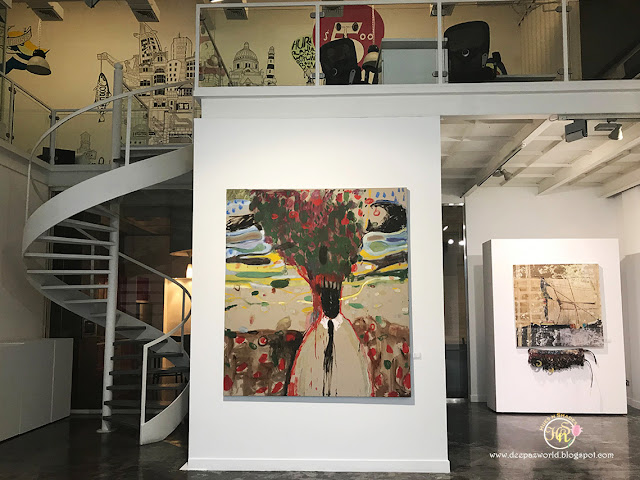


La Galerie Nationale is not a typical gallery per say. I had the feeling of entering a designer home/apartment adorned with decorative pieces, eclectic furniture and then a coulourful array of fun, vibrant and buoyant-child-like paintings. When I say child-like, it’s by no means offensive...the strokes have the spirit and energy of, may I say, a flamboyant child. Only here, the child is the famous Moroccan writer, Tahar Ben Jelloun. It is a celebration of colours and life-force that one sees here. I am talking about ‘Cultural Crossroads’ the first solo show in the Middle East and is the recognition of a friendship between Ben Jelloun and Guillaume Cuiry, director and curator of the gallery.
“Beauty is first and foremost an emotion.”
The exhibition is on until 15 Sep.
Rubbles and ruins were dispersed across the floor, some sketches along the walls and a looped video on the far end of Green Art Gallery, ‘Demolishing buildings, buying waste’; recorded and analyzed the demolition of a building in Tehran and incorporated the ‘traces’ of the process as video, sculpture and drawings. The artist, Nazgol Ansarinia’s interest is in Tehran’s changing architectural landscape and its relationship to collective consciousness. To me, these works spoke of the tale of every developing city/urban space in the world; paradoxical cycle of construction and deconstruction.
“Every part of this city is associated with memories from different stages in my life. I think that’s what makes this fast speed of construction so destructive in a way. It’s taking away our collective memory and individual memory with it. Neighbourhoods are changing so fast that they are unrecognizable. You feel lost when you can’t relate to a space.”
(from “The Artist and their City”, The Guardian / Tate, 2016)
Ref:Alserkal Avenue








